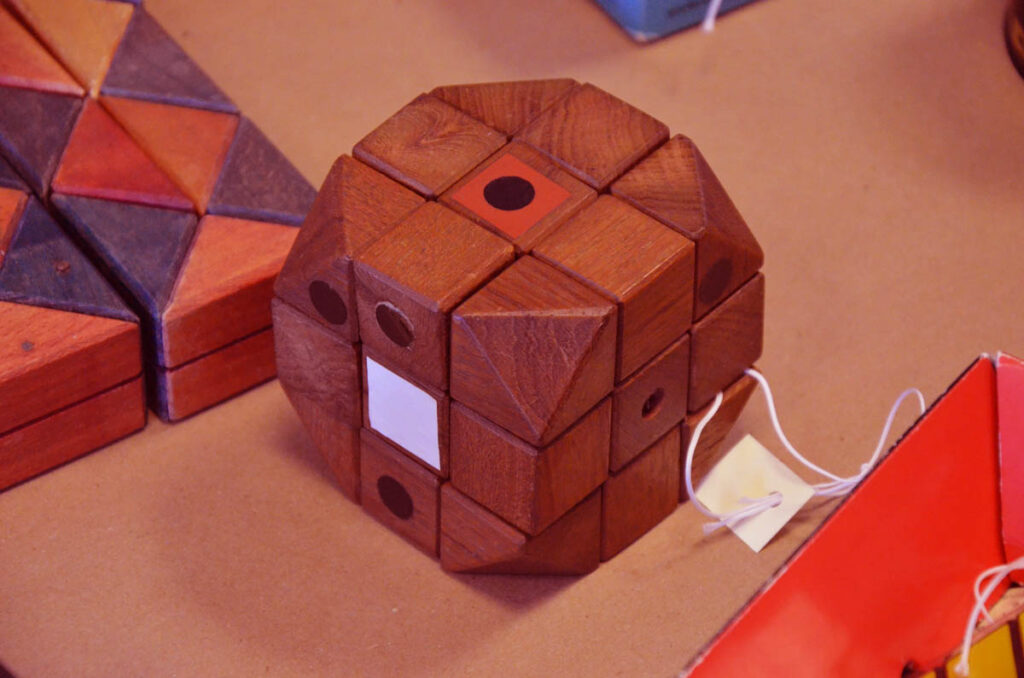In the realm of puzzles and brain teasers, few have captured the imagination of people worldwide quite like the Rubik’s Cube. What started as a humble invention by Hungarian architect and professor Ernő Rubik in 1974 quickly transformed into a global sensation, captivating minds and fingers alike. This colorful cube, with its deceptively simple design, not only became a symbol of intellectual prowess but also triggered a craze that transcended borders and generations. Let’s delve into the accidental rise of the Rubik’s Cube and explore the cultural impact that has endured for decades.
Page Contents
The Birth of the Rubik’s Cube
Ernő Rubik, the inventor of the cube, initially created it as a teaching tool to help his students understand three-dimensional geometry. Little did he know that this seemingly straightforward educational aid would soon become a worldwide phenomenon. In 1974, Rubik patented his “Magic Cube,” as it was originally called, and began distributing it locally in Hungary. The cube, consisting of smaller colored cubes that could be twisted and turned independently, posed a fascinating challenge.
Read Also : Coca-Cola’s Fizzical Chemistry: The Accidental Origin of a Global Beverage
Early Days and Local Recognition
In the early years, the Magic Cube gained popularity primarily within Hungary. Its intricate design and the challenge it presented intrigued not only students but also adults looking for a mental workout. However, it was still a far cry from the global phenomenon it would later become. The cube’s breakthrough on the international stage occurred in the late 1970s when it caught the attention of an American toy company, Ideal Toy Corp.
Rebranding and Global Launch
Ideal Toy Corp recognized the potential of the Magic Cube and saw an opportunity to market it worldwide. In 1980, after some modifications to enhance its playability and commercial appeal, the cube was reintroduced as the Rubik’s Cube. The new name not only paid homage to its creator but also added a catchy ring to it. The Rubik’s Cube was officially launched in international markets, and its mesmerizing combination of colors and geometric complexity sparked a craze that would soon sweep the globe.

The Puzzle Takes the World by Storm
The Rubik’s Cube was an instant hit. Its popularity spread like wildfire, transcending cultural and language barriers. People from all walks of life were drawn to the challenge of solving the cube, creating a unique subculture of cubing enthusiasts. The cube became more than just a toy; it became a symbol of intellectual prowess, patience, and perseverance.
Competitive Cubing Emerges
As the Rubik’s Cube craze gained momentum, so did the desire to solve it quickly. This led to the emergence of competitive speedcubing – a subculture within the larger cubing community. Enthusiasts began timing themselves and challenging each other to break records. The World Cube Association (WCA) was founded in 2004, formalizing competitions and standardizing regulations. Speedcubing became a serious sport, with competitors from around the world participating in events and pushing the limits of what seemed humanly possible.
Cultural Impact and Artistic Expressions
Beyond its popularity as a puzzle and a competitive endeavor, the Rubik’s Cube found its way into various forms of art and cultural expressions. Artists and designers began using the cube as a medium for creative expression. From intricate mosaics to sculptures, the Rubik’s Cube became a versatile canvas for those seeking to merge art with the enigmatic nature of the puzzle.
Educational Benefits and Cognitive Development
The Rubik’s Cube’s inadvertent journey into the educational realm surprised many. Teachers and educators recognized its potential as a tool for developing critical thinking skills, spatial awareness, and problem-solving abilities. Schools started incorporating the cube into their curriculum, using it to engage students in a hands-on and enjoyable learning experience. The cube’s ability to stimulate the mind while providing a tangible and tactile experience made it an effective educational tool.
The Resilience of the Rubik’s Cube
Decades after its initial surge in popularity, the Rubik’s Cube continues to captivate new generations. Despite the ever-evolving landscape of toys and entertainment, this timeless puzzle has endured. Its enduring appeal lies in its simplicity, coupled with the infinite complexity it offers. The Rubik’s Cube has become a symbol of nostalgia for those who grew up in the 1980s and a contemporary challenge for those discovering it for the first time.
The Digital Age: Cubing in the Virtual World
In the age of smartphones and digital gaming, the Rubik’s Cube has seamlessly transitioned into the virtual realm. Numerous apps and online platforms allow enthusiasts to solve the cube digitally, connecting with a global community of like-minded individuals. The cube’s journey from a physical, handheld puzzle to a virtual experience speaks to its adaptability and timeless appeal.
Read Also : The Accidental Brilliance of Ballpoint Pens: Writing Revolution
Conclusion
The accidental rise of the Rubik’s Cube from a teaching tool in a Hungarian classroom to a global phenomenon is a testament to the power of simplicity and intellectual engagement. What began as an educational aid transformed into a symbol of challenge, competition, and creativity. The Rubik’s Cube’s impact on culture, education, and entertainment showcases its versatility and enduring relevance. As we continue to navigate the complexities of the modern world, the Rubik’s Cube stands as a colorful reminder that sometimes the simplest ideas can lead to the most profound and unexpected outcomes.


